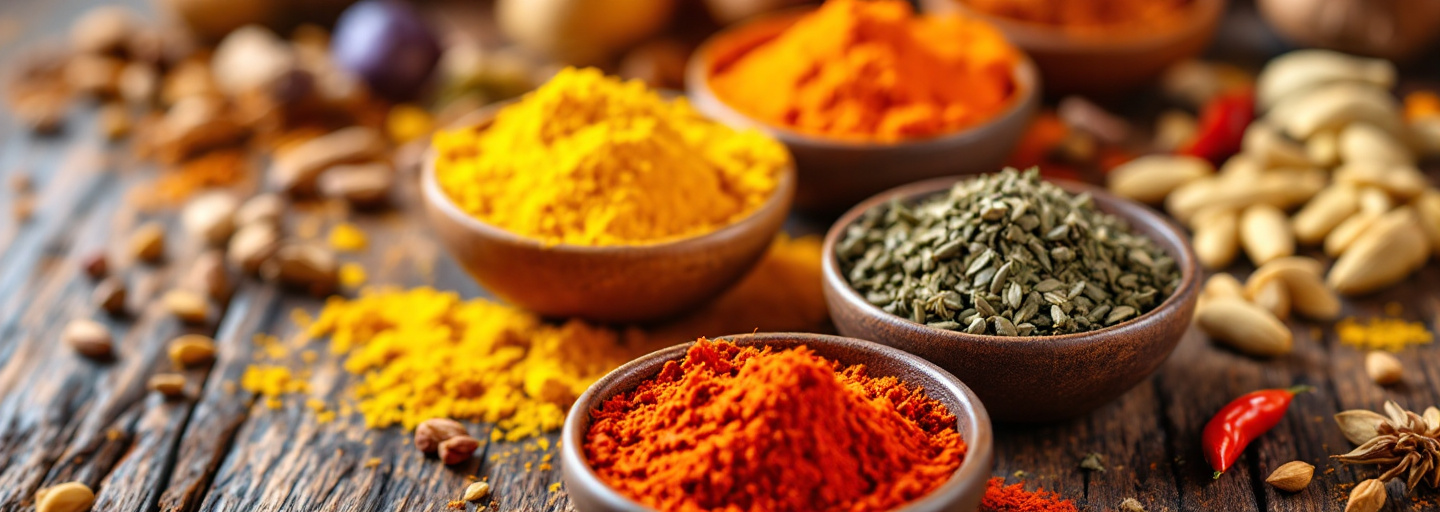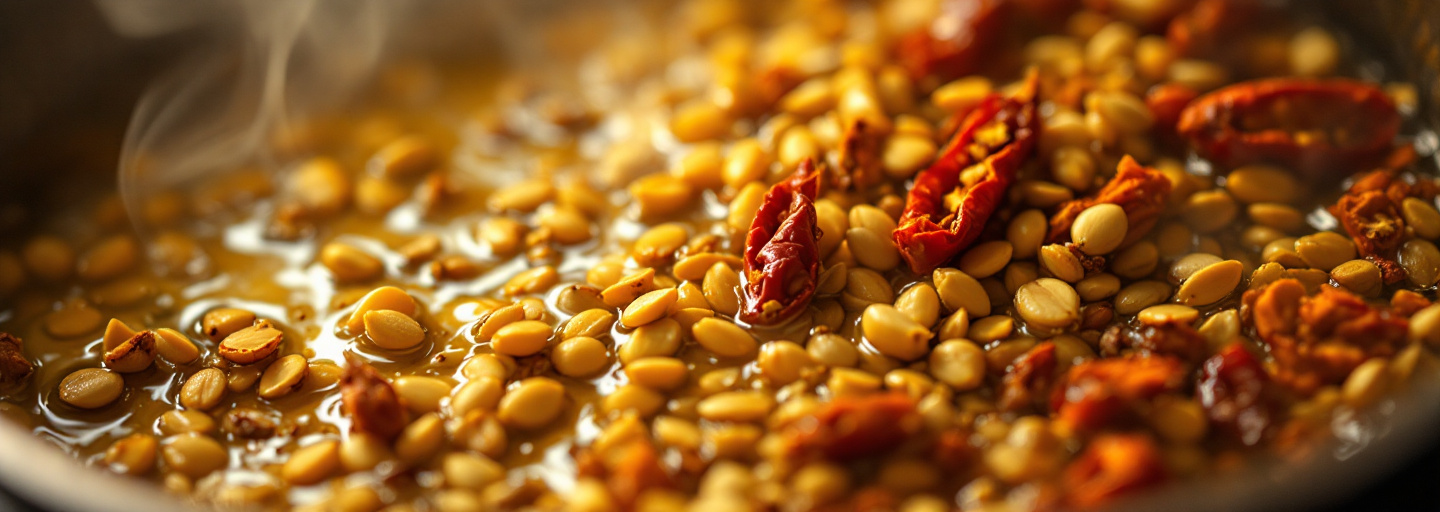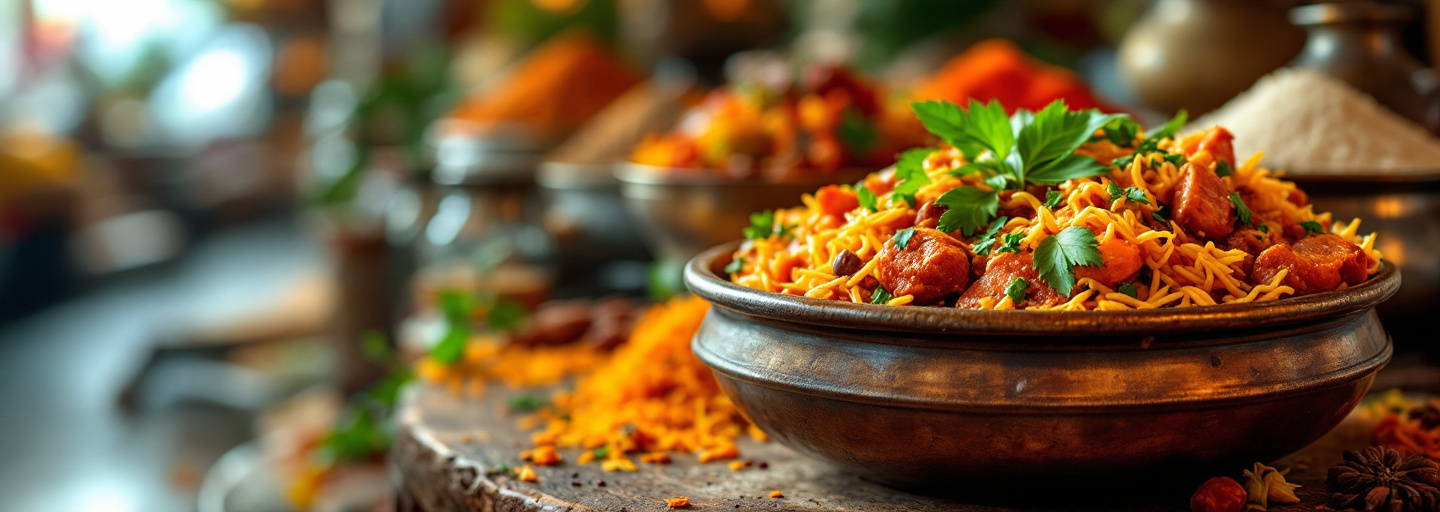The Historical Roots of Indian Spices
India’s relationship with spices dates back thousands of years, shaping not only its own culinary traditions but also influencing global trade and cuisine. The country’s spice wealth made it a focal point for merchants, explorers, and even colonizers, all eager to access its aromatic treasures.
The Spice Trade and India’s Global Influence
Long before modern trade routes, India was a key player in the spice trade, supplying the world with prized ingredients like black pepper, cardamom, and cinnamon. Ancient civilizations, from the Romans to the Chinese, sought Indian spices for their culinary and medicinal properties. By the time the Silk Road and maritime trade routes flourished, Indian spices had already reached distant lands, shaping the flavors of Middle Eastern, European, and Southeast Asian cuisines.
The Portuguese, Dutch, and British all established trade networks in India, further spreading its spices worldwide. Black pepper, once known as "black gold," was so valuable that it was used as currency in some regions. Even today, Indian spice blends like garam masala and curry powder are staples in kitchens across the globe.
Spices in Indian Culture and Tradition
Beyond trade, spices have deep cultural and religious significance in India. Ayurveda, the ancient Indian system of medicine, has long used spices for their healing properties—turmeric for its anti-inflammatory benefits, cumin for digestion, and cloves for pain relief. Spices also play a role in religious rituals, with offerings of saffron-infused milk or incense made from aromatic spices being common in Hindu ceremonies.
From royal kitchens to humble homes, spices have always been at the heart of Indian cooking, not just for their flavors but for their ability to preserve food, aid digestion, and enhance overall well-being. This historical foundation explains why Indian cuisine remains one of the most spice-rich and flavorful in the world.
The Science Behind Indian Spice Combinations
Indian cuisine isn’t just about adding heat—it’s a carefully balanced interplay of flavors, aromas, and health benefits. Unlike Western cooking, which often pairs similar flavors together, Indian cuisine follows a unique principle: contrasting flavors enhance each other. This scientific approach to spice combinations is what makes Indian food so complex and satisfying.
The Art of Contrasting Flavors
A study analyzing thousands of Indian recipes found that Indian cuisine tends to avoid overlapping flavor compounds. Instead of reinforcing a single taste, it layers contrasting elements—sweet with bitter, spicy with cooling, earthy with citrusy. This is why a dish like chana masala (spiced chickpea curry) combines tangy tomatoes, warming cumin, and fragrant coriander, creating a depth of flavor that keeps every bite interesting.
Spices also help balance the five fundamental tastes:
Sweet – Found in cinnamon and fennel, often used to mellow out heat.
Sour – Tamarind and dried mango powder add tanginess to balance richness.
Bitter – Fenugreek and mustard seeds provide a subtle bitterness that enhances complexity.
Umami – Asafoetida and black cardamom deepen savory notes.
Spicy – Chili peppers and black pepper bring heat, stimulating the palate.
Health Benefits Beyond Flavor
Beyond taste, Indian spices offer significant health benefits. Turmeric, a staple in Indian cooking, contains curcumin, known for its anti-inflammatory and antioxidant properties. Cumin aids digestion, while cloves have antibacterial effects. Even the simple act of tempering spices in hot oil (tadka) enhances their bioavailability, making their nutrients easier for the body to absorb.
The careful balance of spices contributes to Indian cuisine being both delicious and deeply nourishing. Every dish is a balance of taste, aroma, and wellness—crafted with intention and tradition.
Regional Variations in Indian Spice Usage
Each region of India showcases its own unique approach to spices, reflecting the country's rich culinary diversity. From the bold, aromatic curries of the north to the coconut-infused flavors of the south, geography and climate play a significant role in shaping regional spice preferences.
North vs. South: A Tale of Two Spice Palettes
In North India, dishes tend to be rich and robust, often featuring warming spices like cumin, cloves, and cardamom. Garam masala, a signature spice blend, adds depth to creamy curries like butter chicken and paneer tikka masala. The colder climate of the north favors these warming spices, which not only enhance flavor but also aid digestion and circulation.
In contrast, South Indian cuisine leans towards tangy, spicy, and coconut-based flavors. Mustard seeds, curry leaves, and dried red chilies are commonly used in dishes like sambar (a lentil-based stew) and rasam (a spiced tamarind soup). The tropical climate of the south encourages the use of cooling ingredients like coconut and tamarind, balancing the heat from chilies.
Coastal vs. Inland Spice Preferences
Coastal regions, such as Kerala and Goa, incorporate seafood-friendly spices like black pepper, turmeric, and kokum (a souring agent). These spices complement the natural sweetness of fish and shellfish while also acting as natural preservatives in humid conditions.
Inland regions, like Rajasthan, rely on dried spices due to the arid climate. Dishes here often feature dried chilies, asafoetida, and fenugreek, creating intensely spiced curries that require minimal fresh ingredients.
Iconic Regional Spice Blends
| Region | Signature Spice Blend | Key Ingredients |
|---|---|---|
| North India | Garam Masala | Cinnamon, Cloves, Black Cardamom |
| South India | Sambar Powder | Coriander, Dried Chilies, Lentils |
| East India | Panch Phoron | Fennel, Nigella, Cumin, Fenugreek, Mustard Seeds |
| West India | Goda Masala | Sesame Seeds, Coconut |
These regional variations highlight the depth and complexity of Indian cuisine, proving that no two spice blends—or dishes—are ever quite the same.
The Role of Spices in Indian Cooking Techniques
In Indian cuisine, spices play a crucial role not only in flavor but also in the cooking process itself. Indian cooking techniques ensure that every spice reaches its full potential, enhancing both taste and aroma.
The Magic of Tempering (Tadka)
One of the most distinctive techniques in Indian cooking is tadka , or tempering. This involves heating oil or ghee and adding whole spices like mustard seeds, cumin, and dried chilies. The hot fat extracts the essential oils from the spices, intensifying their aroma and infusing the dish with deep, layered flavors.
Tadka is often the first or final step in a dish. In lentil-based dishes like dal, a finishing tadka of sizzling garlic, cumin, and red chilies transforms a simple preparation into something rich and aromatic. The technique is also used in vegetable stir-fries, chutneys, and even yogurt-based dishes to add warmth and complexity.
Layering Spices for Depth
Unlike cuisines that mix all seasonings at once, Indian cooking builds flavor in stages. Spices are added at different points in the cooking process to create a multi-dimensional taste experience:
Whole spices first – Cumin, bay leaves, or cardamom pods are often toasted in oil to release their essential oils.
Ground spices next – Turmeric, coriander, and chili powder are added once the base ingredients (onions, tomatoes, garlic) have softened.
Finishing touches – Garam masala or fresh herbs like cilantro are sprinkled at the end to preserve their delicate aromas.
This technique allows each ingredient to contribute to the final flavor profile without any single spice dominating.
Fresh vs. Pre-Ground Spices
Grinding spices fresh is another key practice in Indian cooking. While pre-ground spices are convenient, they lose potency over time. Freshly ground cumin, coriander, or black pepper have a more vibrant aroma and stronger flavor. Many Indian households use a mortar and pestle or spice grinder to prepare small batches, ensuring maximum freshness.
This attention to technique is what makes Indian cuisine so distinctive. It’s not just about what spices are used—it’s about how they’re treated, layered, and cooked to bring out their full potential.
Why Spices Define Indian Cuisine’s Global Appeal
The bold, aromatic flavors of Indian cuisine are largely attributed to its masterful use of spices. But what makes these flavors so universally appealing? The answer lies in how Indian spices have made a significant impact on global cuisines, their ability to create complex taste experiences, and their increasing accessibility to home cooks worldwide.
Indian Spices in Global Cuisines
Indian spices have made a significant impact on global cuisines. British curries, for example, evolved from Indian dishes brought back during colonial rule, leading to the creation of beloved staples like chicken tikka masala. In Southeast Asia, Indian spice blends have shaped dishes such as Thai massaman curry , which incorporates cardamom, cinnamon, and cloves—spices commonly found in Indian kitchens. Even in the Caribbean, Indian migrants introduced turmeric, cumin, and mustard seeds, which now define many regional dishes.
The global spread of Indian spices has integrated them into numerous culinary traditions. Whether it’s the use of garam masala in Middle Eastern stews or the addition of turmeric in Western health foods, Indian spices have become a cornerstone of international cooking.
The Bold and Complex Flavors That Stand Out
One reason Indian cuisine is so celebrated worldwide is its ability to create deep, layered flavors. Unlike many Western dishes that rely on a few dominant tastes, Indian cooking builds complexity through a combination of sweet, sour, bitter, spicy, and umami elements. This makes every bite dynamic and satisfying.
For example, a dish like butter chicken isn’t just creamy and rich—it’s also tangy from tomatoes, slightly sweet from caramelized onions, and subtly smoky from roasted spices. This balance of flavors keeps Indian food exciting and memorable, making it a favorite across cultures.
Bringing Indian Flavors to Home Kitchens
With the rise of global food culture, Indian spice blends are now widely available, making it easier than ever for home cooks to experiment with authentic flavors. Pre-mixed blends like garam masala, curry powder, and chaat masala allow even beginners to recreate traditional Indian dishes without needing an extensive spice collection.
Moreover, apps like cook.aizdzjsimplify the process by suggesting recipes based on available ingredients, helping home cooks incorporate Indian spices into their meals effortlessly. Whether it’s adding cumin to roasted vegetables or using turmeric in a smoothie, Indian flavors are now more accessible than ever.
The global appeal of Indian cuisine stems not only from its rich history but also from the ongoing inspiration and enhancement its spices provide to dishes worldwide. Whether in a Michelin-starred restaurant or a home kitchen, the magic of Indian spices remains undeniable.












